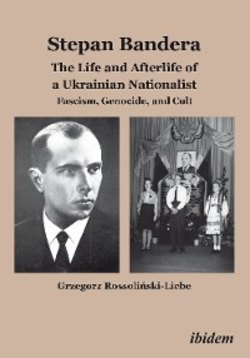Читать книгу Stepan Bandera: The Life and Afterlife of a Ukrainian Fascist - Grzegorz Rossoliński-Liebe - Страница 13
Fascism, Nationalism, and the Radical Right
ОглавлениеHaving explained fascism, it is necessary to briefly explain the difference between fascism and nationalism, two quite closely related phenomena. The modern form of nationalism, defined as a political program that instrumentalizes and mystifies the past to form a national community and establish a nation state, has its origins in the late eighteenth and early nineteenth centuries.[61] Nationalism was a byproduct of the French Revolution and the modern politics generated by it. In addition, it was also influenced by Romanticism. Nationalist movements took very different forms, depending on the social and political circumstances of the groups that invented or adopted this ideology. Nationalism became radicalized, especially during the late nineteenth and early twentieth centuries. According to George Mosse nationalism became the “life-system which provided the foundation for all fascist movements.” The mass violence caused by and experienced during the First World War contributed to the development of fascism, which was in its first stage, according to Sternhell, a “synthesis of organic nationalism and anti-Marxist socialism.” Fascism became the most radical form of nationalism, but its own ideology and goals differed from those of nationalism. Although nationalism and fascism were influenced by racism and antisemitism, they were not racist or antisemitic to the same extent. Finally, we should keep in mind that, although nationalism and fascism are distinct in nature, the boundaries between them became blurred, especially in the case of such movements as the OUN and Ustaša, which both understood themselves as nationalist “liberation movements” related to other fascist movements.[62]
During the interwar period, Bandera and the OUN called themselves “nationalists,” but regarded the OUN as a movement related to the Italian Fascists, the National Socialists, the Iron Guard, and similar movements. In this study, therefore, they will be called either nationalist or fascist, depending on the context. Individuals or groups during the Cold War or after the dissolution of the Soviet Union, who established a cultural, spiritual, or emotional continuity between themselves and the interwar OUN, its leaders and members, or its politics, will be referred to as “nationalist,” “neo-fascist,” “radical right,” or “far right,” depending on the context. “Neo-fascism” in this study means the rebirth of fascist ideas and aesthetics after the end of the Second World War, when the main fascist states had disappeared, and fascism as an ideology was completely discredited on account of the atrocities committed by Nazi Germany and other similar movements and regimes.
The terms “fascism” and “radical right” or “far right” do not mean the same thing. The term “radical right” is also an ambiguous one. On the one hand, it has been used since the 1950s, especially by political scientists, to describe ultranationalist, anticommunist, fundamentalist, or populist parties. On the other hand, scholars use it in a more general context to refer to modern radical nationalist movements, which have been emerging in Europe since the late nineteenth century. In general, the term “radical right” is a broader one than “fascism.” “Fascism” bears a more specific meaning than “radical right.” It refers to a specific kind of “radical right” movement that emerged after the First World War, such as the Italian Fascists, the National Socialists, and a number of other smaller parties or organizations that sought to take power and introduce fascist dictatorships.[63]
